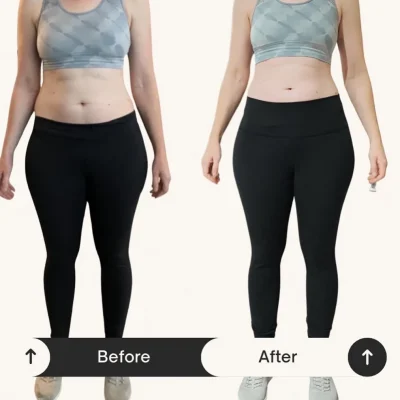With effective weight loss exercises, you can transform your fitness journey and achieve your goals. Integrating high-intensity interval training (HIIT) and strength training into your routine not only boosts your metabolism but also builds lean muscle. Activities like running and cycling can significantly burn calories, while yoga enhances flexibility and mental focus. Choosing the right mix of exercises tailored to your preferences will ensure lasting results and keep you motivated on your path to a healthier lifestyle.
Key Takeaways:
- High-intensity interval training (HIIT) effectively burns calories and improves metabolic rate.
- Strength training helps build muscle, which increases resting metabolism and promotes fat loss.
- Cardiovascular exercises, such as running and cycling, are effective for burning calories and improving overall endurance.
Understanding Weight Loss Exercises
Weight loss exercises are not just about burning calories; they involve a strategic combination of movements designed to boost metabolism, build muscle, and enhance overall fitness. You must select the right types of exercise that fit your lifestyle and preferences, making it easier to stick with a routine. This comprehensive approach ensures sustainable weight loss while improving body composition and health metrics.
The Science Behind Fat Loss
Fat loss revolves around creating a caloric deficit, where the calories burned exceed calories consumed. This process accelerates when you engage in higher-intensity workouts, which require more energy and, in turn, ramp up metabolism hours after exercise. Your body also adapts by using fat as a primary fuel source during longer sessions, solidifying exercise’s role in successful weight loss.
Importance of Combining Cardio and Strength
Integrating both cardio and strength training optimizes your weight loss efforts. Cardio exercises, such as running or cycling, excel at burning calories during the workout, while strength training increases muscle mass, leading to greater calorie expenditure at rest. A balanced routine not only enhances your metabolic rate but also supports muscle retention, which is vital for a toned physique.
Research shows that you can achieve a 15% greater weight loss by combining cardio with strength training compared to cardio alone. For instance, incorporating two to three strength training sessions weekly alongside regular cardio workouts like HIIT or steady-state running leads to improved body composition and a more efficient metabolism. This hybrid approach yields faster results and fosters a healthier lifestyle, making it easier for you to maintain your weight loss long term.
Top Cardio Exercises for Weight Loss
Cardio exercises are vital for creating a calorie deficit, making them crucial for weight loss. Engaging in activities that elevate your heart rate can significantly contribute to your overall fat-burning efforts. Consistency and intensity play a key role, so finding a rhythm that fits your lifestyle is crucial for maximizing results.
Running and Jogging
Running and jogging are among the most effective cardio exercises for weight loss, burning around 600-1000 calories per hour depending on your weight and speed. These activities boost your heart health, build endurance, and help you shed unwanted pounds. Incorporating interval sprints can further enhance calorie burn and metabolic rate.
Cycling
Cycling is a low-impact, yet highly effective cardio workout that burns approximately 500-1000 calories per hour, depending on speed and intensity. You can choose between outdoor cycling or stationary bikes, both offering great options to increase your heart rate while being gentle on your joints. This versatility allows you to maintain a steady exercise regimen without risking injury.
For weight loss, cycling intervals can amplify calorie expenditure. Alternating between high-intensity sprints and moderate-paced cycling enhances cardiovascular fitness while promoting fat loss. Engaging in group cycling classes can also provide motivation and structure, turning workouts into social events. Research shows that individuals who cycle regularly not only lose weight but also experience improved overall fitness and mental health benefits.
Strength Training for Effective Weight Loss
Incorporating strength training into your routine accelerates weight loss by increasing your muscle mass and boosting your metabolism. Muscle burns more calories at rest compared to fat, leading to a higher overall calorie expenditure. Strength training also enhances your body composition, helping achieve a toned appearance while promoting fat loss. Aim for a mix of free weights, machines, and bodyweight exercises to maximize effectiveness.
Weight Lifting
Weight lifting is a highly effective method for weight loss, targeting multiple muscle groups simultaneously and promoting muscle growth. Compound movements like squats, deadlifts, and bench presses engage large muscles, elevating your heart rate and expending more energy. Incorporating a structured weightlifting program can lead to significant fat loss, with some studies noting a potential increase in resting metabolic rate by up to 15% over time.
Bodyweight Exercises
Bodyweight exercises offer a convenient and effective way to build strength and lose weight without the need for equipment. Movements like push-ups, pull-ups, and lunges can be performed anywhere and are scalable to fit your fitness level. These exercises utilize your body weight as resistance, challenging your muscles while also improving functional strength.
Incorporating bodyweight exercises into your regimen can lead to impressive results. For instance, a study found that performing bodyweight resistance training for just eight weeks resulted in an average fat loss of 4.5% and a strength increase of 10-20% in participants. The versatility of bodyweight workouts allows you to target various muscle groups efficiently, making them a cornerstone of an effective weight loss strategy that can easily fit into any schedule.
High-Intensity Interval Training (HIIT)
HIIT is a highly effective training method that alternates short bursts of intense exercise with periods of rest or low-intensity exercises. This technique not only maximizes calorie burn during workouts but also boosts your metabolic rate for hours post-exercise. By engaging in HIIT, you enhance cardiovascular fitness and improve your overall stamina while efficiently targeting fat loss, making it an excellent choice for anyone looking to shed pounds quickly.
Benefits of HIIT
Engaging in HIIT offers numerous benefits, including increased fat loss, improved aerobic and anaerobic fitness, and time efficiency. You can burn more calories in a shorter workout compared to steady-state cardio. Research indicates that HIIT can also lead to greater fat loss, particularly in stubborn abdominal areas. Additionally, this training method may enhance insulin sensitivity and metabolic health, supporting long-term weight management.
Sample HIIT Workouts
Kickstart your HIIT journey with workouts that can easily fit into your schedule. Consider exercises like burpees, jump squats, and high knees, alternating between 20 seconds of maximum effort and 10 seconds of rest, repeated for 4-8 rounds. Alternatively, you might utilize classic cardio machines such as treadmills or bikes, sprinting at high intensity for 30 seconds, followed by a minute of walking or slow pedaling.
For personalization, try a simple 20-minute HIIT routine: start with a warm-up, then execute 40 seconds of intense effort followed by 20 seconds of rest across exercises such as mountain climbers, squat jumps, and push-ups. This format provides flexibility; you can adjust the work-to-rest ratio and the total rounds depending on your fitness level. The versatility of HIIT allows you to incorporate various movements, keeping your workouts fresh and engaging while delivering substantial weight loss results.
Incorporating Flexibility and Core Workouts
Integrating flexibility and core workouts enhances your overall fitness and weight loss journey. By including activities that improve flexibility and stability, you not only prevent injuries but also boost your performance in other exercises. Regularly practicing flexibility-focused workouts can lead to greater range of motion, which helps with more effective strength training sessions. Core workouts are imperative as they stabilize your posture and enhance your overall balance, making your body more efficient during high-intensity exercises.
Yoga for Weight Loss
Yoga promotes weight loss by fostering mindfulness and reducing stress, contributing to healthier lifestyle choices. It incorporates various poses that build strength and improve flexibility, increasing calorie burn. For example, Vinyasa or Power Yoga can elevate your heart rate and enhance muscle tone. Studies have shown that consistent yoga practice not only helps in weight management but also supports metabolic health, leading to a balanced approach to fitness.
Pilates for Strength and Flexibility
Pilates focuses on core strength and flexibility, making it a powerful complement to any weight loss regimen. By emphasizing controlled movements and proper alignment, you engage multiple muscle groups, enhancing your stability and overall strength. The method increases your flexibility and promotes long, lean muscle development, which can lead to a more sculpted appearance and improved athletic performance.
Engaging in Pilates can be particularly beneficial for weight loss, as it encourages a low-impact workout that is easy to sustain over time. A typical session includes exercises targeting the abdomen, hips, and lower back, improving your posture and reducing the risk of injury. Many practitioners report increased muscle tone and better body awareness, correlating with positive changes in weight and composition. Adding just a few sessions a week can complement aerobic activities, making your routine balanced and effective for reaching your weight loss goals.
Creating a Balanced Workout Plan
A balanced workout plan incorporates a variety of exercises to ensure you engage different muscle groups and improve overall fitness. This includes cardiovascular activities, strength training, flexibility work, and core exercises. Focusing on variety not only combats boredom but also maximizes calorie burn and muscle growth. By scheduling workouts throughout the week, you can tailor your routine to include rest days while still maintaining consistency in your fitness journey.
Combining Different Types of Exercises
To optimize your results, mix various exercise forms in your routine. Combining cardio, strength training, and flexibility workouts can create a well-rounded approach. This strategy helps prevent plateaus and enhances performance.
- Cardiovascular workouts improve heart health and stamina.
- Strength training builds muscle and boosts metabolism.
- Flexibility exercises enhance mobility and reduce injury risk.
- Core workouts strengthen your midsection for better stability.
- Knowing your body and preferences will help you stay committed to your plan.
| Exercise Type | Benefit |
| Cardio | Burns calories and promotes weight loss |
| Strength | Increases muscle mass and metabolism |
| Flexibility | Improves range of motion and reduces tension |
| Core | Enhances stability and balance |
| Total Routine | Maximizes overall fitness and keeps you engaged |
Setting Achievable Goals
Establishing achievable goals is vital for sustaining motivation and tracking progress in your weight loss journey. Break larger objectives into smaller, manageable targets to give yourself a clear path forward. For instance, aim for specific milestones, like losing 1-2 pounds per week or increasing your workout frequency gradually.
Setting SMART (Specific, Measurable, Achievable, Relevant, Time-bound) goals can enhance your ability to achieve lasting success. For instance, instead of saying “I want to lose weight,” specify that you aim to lose 5 pounds in a month through a mix of cardio and strength workouts. Regularly reassessing these goals and celebrating small victories will maintain your motivation and commitment, ensuring that your weight loss journey is both sustainable and fulfilling.
Final Words
Summing up, incorporating a mix of high-intensity interval training, strength training, and aerobic exercises into your routine can significantly enhance your weight loss efforts. Activities like running, cycling, and bodyweight exercises not only burn calories but also help build muscle, which boosts your metabolism. Consistency is key; by targeting various muscle groups and varying your workouts, you can keep your routines engaging and effective. Prioritizing these top weight loss exercises will empower you to achieve your fitness goals and maintain a healthier lifestyle.
FAQ
Q: What are the most effective cardio exercises for weight loss?
A: High-intensity interval training (HIIT), running, cycling, and swimming are some of the most effective cardio exercises. HIIT involves alternating short bursts of intense activity with periods of rest or low-intensity work, maximizing calorie burn in a short time. Running and cycling boost cardiovascular endurance and facilitate fat burning, while swimming is a full-body workout that enhances muscle tone and promotes weight loss.
Q: Which strength training exercises can aid in weight loss?
A: Compound movements such as squats, deadlifts, bench presses, and rows are effective for weight loss. These exercises work multiple muscle groups simultaneously, increasing calorie expenditure. Incorporating resistance training into a workout routine helps build lean muscle mass, which boosts metabolism and promotes fat burning even at rest.
Q: How often should I exercise to achieve weight loss?
A: Aiming for at least 150 to 300 minutes of moderate-intensity aerobic activity per week, combined with two to three strength training sessions, is recommended. This frequency helps create a calorie deficit vital for weight loss and can improve overall fitness and health. Adjustments can be made based on individual fitness levels and weight loss goals.










































